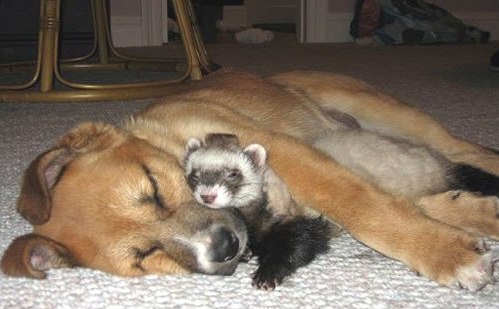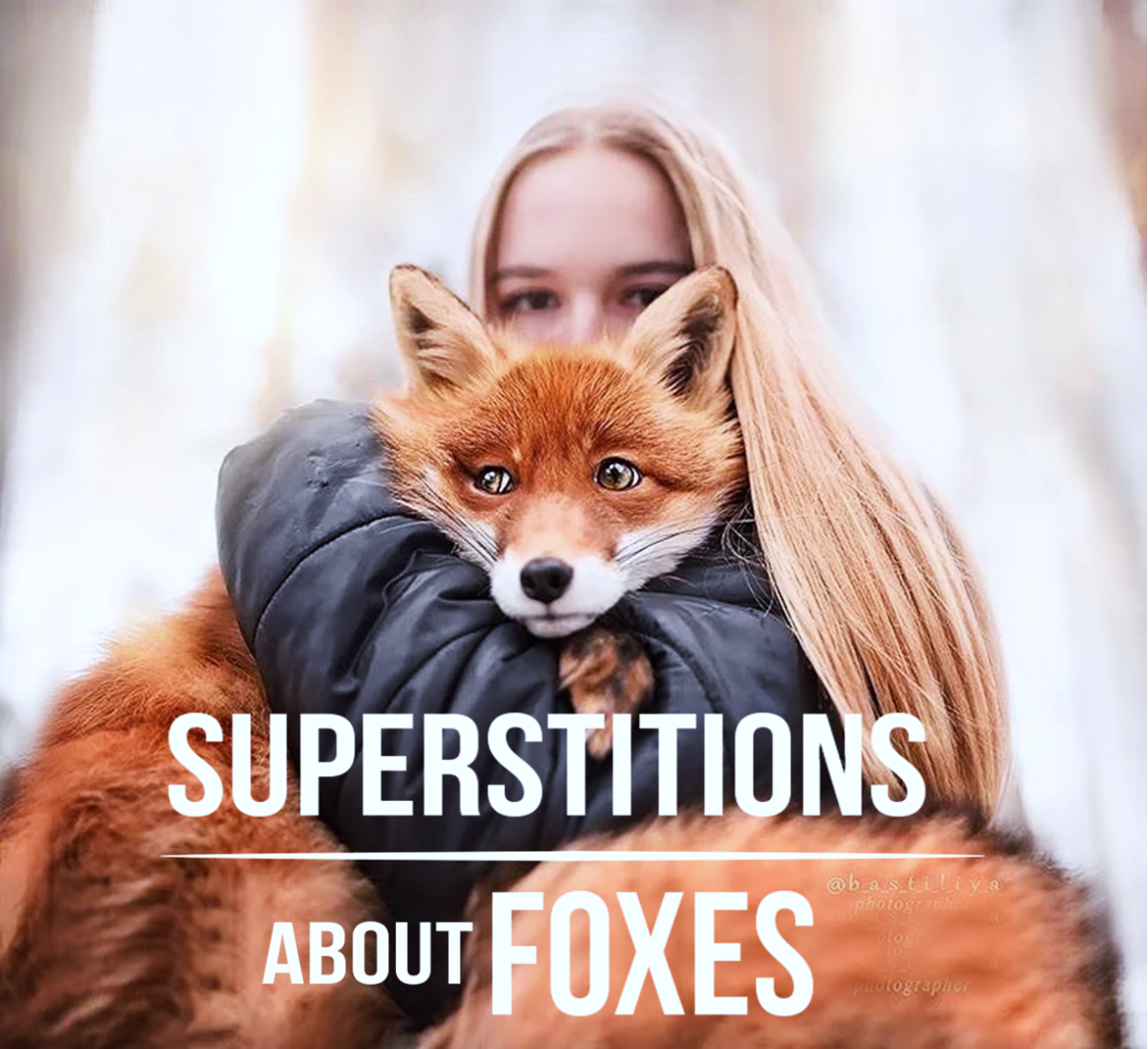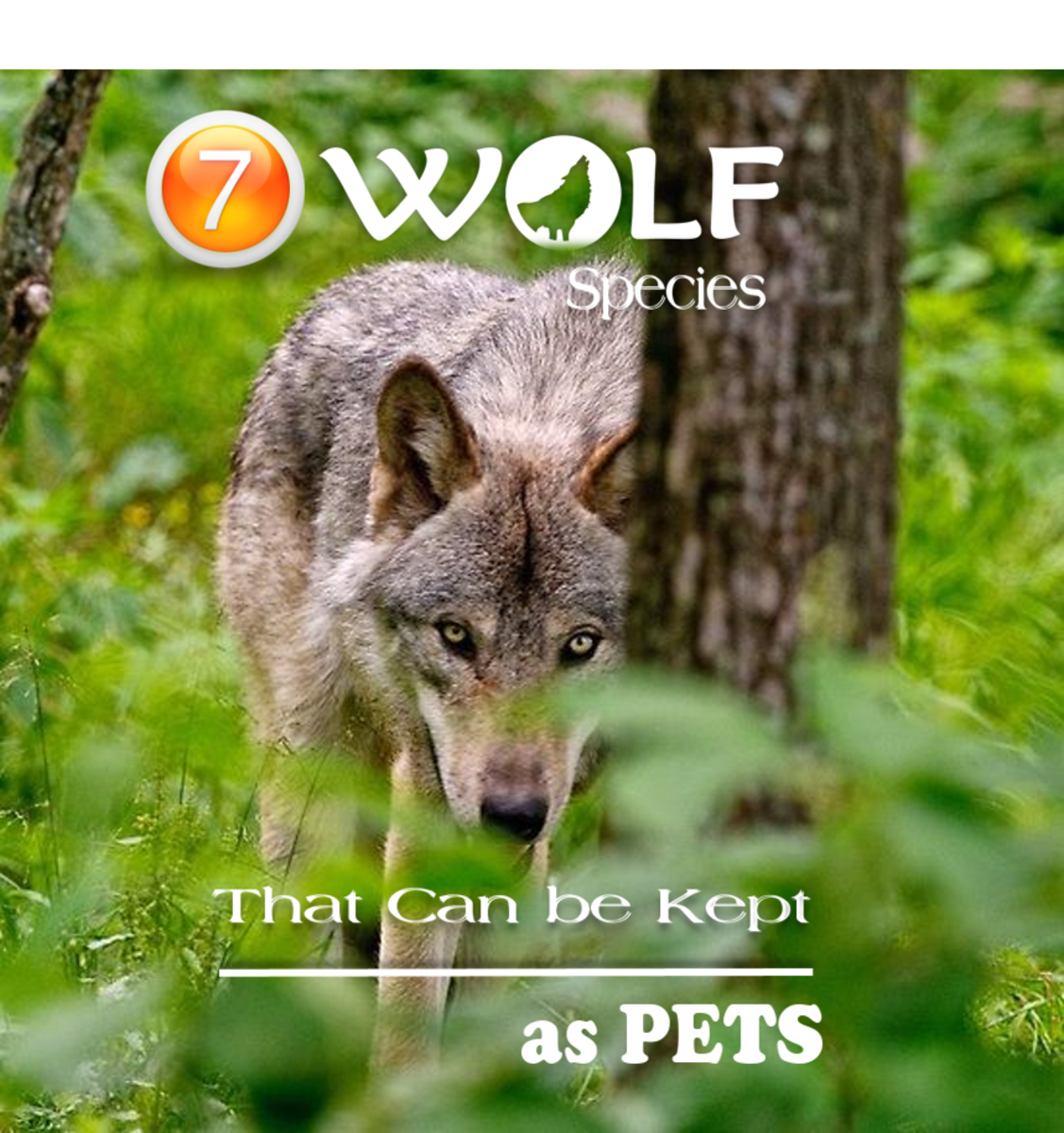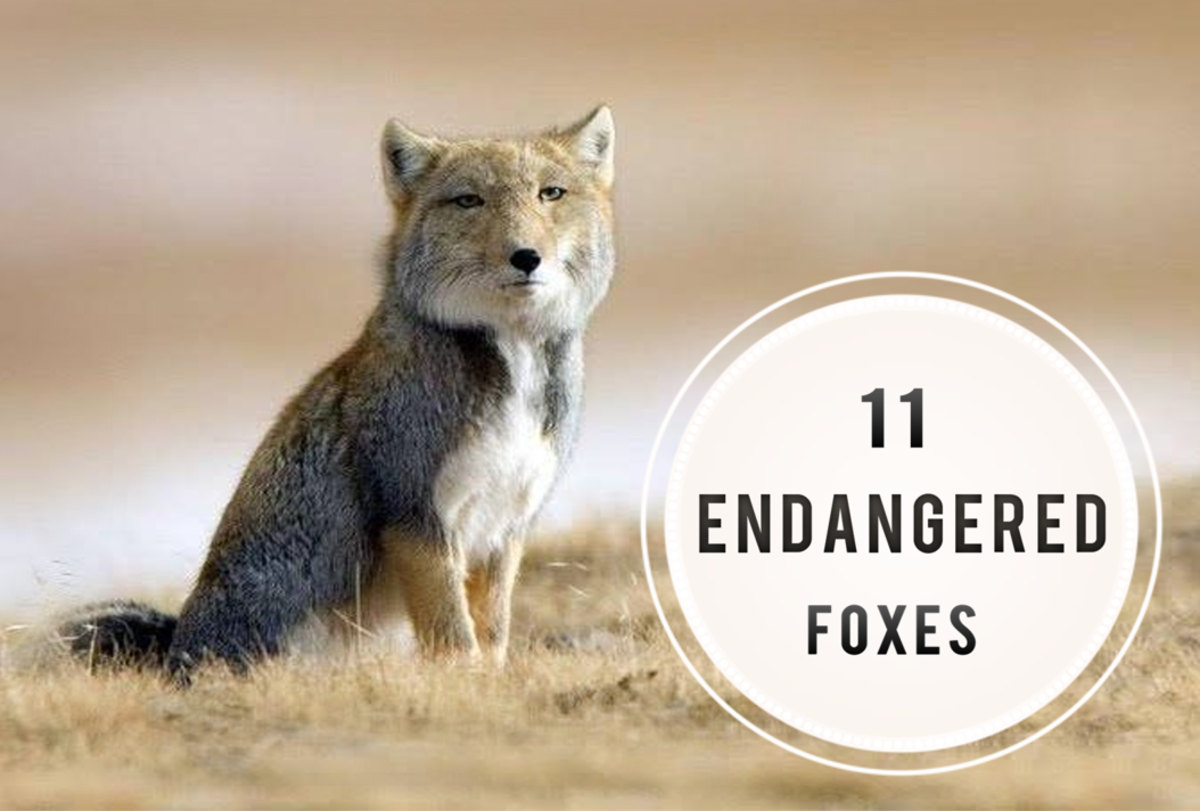Introducing Ferrets to Family and Other Pets

Mature Family Members and Friends
Before introducing your ferret to other mature family members or friends, you must first make sure that the ferret and the other person is calm. Show the person the correct way of holding the ferret. This is by grasping under the arms of the ferret or scruffing it and using an additional hand to support the rump if the ferret is large.
Assuming that everyone knows of the new pet and has good knowledge of ferrets, the next step to do is tell everyone that it is learning to litter train, and tell them how they should go about doing it too if they find the ferret backing away into a corner. If you have already started teaching the ferret tricks, tell them what commands you are teaching your ferret so that the same commands are used.
Gradually you may want to tell as much as is necessary so that if you go away on holiday, someone in the house is capable of looking after the ferret.
Young Family Members and Children
The best thing to do if you have children in the household is to get to know your ferret first before introducing it to the children. You may want to choose a time when the children are on a week school trip in which they are not at home. Understandably, this might not always be possible, but if your ferret has not been trained not to nip, it could be a risk to children. A ferret which has not been trained not to nip should not be allowed near children until it has been trained not to do so.
Babies should NEVER be unattended with a ferret. And if you have a baby living in the house, you should not consider having a ferret.
Depending on the child, you may never be able to let him/her be with the ferret unsupervised at any length of time. This may mean that for the safety of the children in the household and for the ferret, it would be better not to get a ferret in the first place. Also remember that ferret kits are most unsuitable around children as the kit will bite to invite play. Children have sensitive skin and this could lead to crying and some blood being spilled.
Young children can get very excited when being introduced a pet. They may scream or raise their voice too much which can stress the new pet. They may also hold and tug the pet where it can be painful. If this is the case, the child may be too young to have any interactions with ferrets. If you think that the child and ferret can be safe together, then it will be YOUR responsibility to supervise any interaction between the child and ferret AND teach the child some rules for the safety of both parties.
Before the ferret is shown to the child, choose a room which will be the best place for playtime with the ferret. Make sure that the child wears long sleeves, long trousers and shoes to prevent any accidental scratching to the arms and legs from the ferret or having toes bitten. The next thing to do is to tell him/her to be quiet at all times, and show the correct way of holding the ferret. Allow the child stroke and talk to the ferret gently.
Show them that the ferret has sharp claws and sharp teeth, and teach that if it gets hurt, it will bite. Do not let a child pick it up and walk around with it. This will only lead to accidents. Do not let the ferret go anywhere near the child’s face, and do not let the ferret feel trapped. Give the ferret plenty of space and independence especially if the environment is new to it.
Ensure that the child is seated on the floor, or on a chair/sofa. This will prevent stepping on the ferret.
Reward the ferret with a treat if all goes well. Do not let the child give the treat as they can end up giving too much. Tell the child to never feed anything to the ferret. This could mean fewer chances of intestinal blockages due to food that cannot be digested by the ferret, such as chunks of vegetables.
Every household is different and you will need to set up some rules yourself.
Once you feel comfortable that the child remembers all the rules and abides by them and that the interactions between the ferret and child are fair, you may want to expand the play area. Always be careful when you enter or leave a room where the ferret is free to avoid hurting the ferret when you close the door.
It is always a good idea to check up on the playtime regularly. Children can do silly things that can hurt the ferrets so supervision is necessary.
If you are unwilling to supervise, then you should not get a ferret in the first place because you are putting the child’s and ferret’s safety at risk and this is unfair to both. In this case, you may want a pet rat instead as it would not need play interaction as much a ferret needs.
It should be clear that a ferret is not a child’s pet and one should never buy a ferret for a child.
Dogs
Some dogs will tolerate having ferrets all over them, but will growl when they get nipped. Some dogs will never get used to ferrets, and it should be noted that some species of dogs such as terriers were bred to chase and kill small animals.
I have never had a dog with ferrets before, so I am only able to advise only based on common sense. Your dog must be well behaved and be able to listen to commands without fail. So before any interaction can begin, your dog must be trained to human commands.
It is advised that you never leave a dog and a ferret unsupervised with each other, as accidents can happen and it would be wise to minimise the risk of worst case scenarios as much as possible.
A good dog has to be taught that everyone in the household is above in ranking of the “pack” and this will include ferrets. He has to be taught that ferrets are superior than dogs, so you must show that the ferrets eat before the dog before does for example. Dogs can turn aggressive towards ferrets if it feels more superior to them.
On first interaction, make sure the dog is in a calm mood. Hold the dog by the collar so that it cannot make sudden movements to maul the ferret and let the ferret walk all over it. You may find that your dog will be very agitated, but as long as you are in control of the dog, then you can minimise accidents.
When you feel that everything is going well, you should try holding the dog on a leash.
Cats
In my experience, the first interaction with my cat and ferrets went very well. My cat is the type that is timid and scared of everything and she was 6 moths old at the time. She also didn’t have a very strong urge to pounce at things when I first got her.
My cat was allowed to smell and look at the ferrets from their cages for about a week and it was clear that she was wary and scared of them. But there was a part of her that wanted to play with them too as she would try and pat them playfully from outside the cage. This delighted me as the probability of my ferrets and cat being best friends was possible.
On first interaction I just let my ferrets out in the room the cat was in. The ferrets didn’t know what she was but they knew she wasn’t a ferret. All their tails were spiked, but I had one who couldn’t care less about her perhaps because she had been associated with dogs before. My cat on the other hand wasn’t sure what to do. She hid under the bed and found it wasn’t a very good hiding place. She was quite scared, so I put her somewhere high up where she could watch the ferrets, but the ferrets couldn’t get to her. She was very happy just watching the ferrets, and this sort of “interaction” went on for about 2 months.
Gradually though, she came down from that high place more often, and when a ferret came too close to her, she would growl, then hiss a little and paw their faces. Most of the ferrets got the idea and left her alone. She never pounced on them or even touched them, but the ferrets were eager to do that. Sometimes one or two will bite her tail, but usually they only got her fur.
I had an unneutered male who would not leave her alone though, and would chase her everywhere to bite her. For that reason he had to be rehomed, but my other 4 were fine with her.
Gradually she would allow a ferret to come up quite close to her, and she will even play “it” with some of them. She has no troubles sharing her food or water with ferrets but she would not eat and drink at the same time as them. When she started to display signs of irritation when they went near her food, I would always tell her off, so she rarely does it.
Leaving the cat and ferrets unsupervised is not recommended as it is unpredictable what either parties could do.
Other Small Household Pets
Remember, just as cats innately chase, kill and eat mice, ferrets are the same. Ferrets used to be kept on ships to catch and kill mice and rats because they were slim enough to fit through the small holes in the ship. Ferrets are used in this country, for ferreting whereby the ferret is sent down a rabbit hole to chase the rabbit out and when this is done, the rabbit is caught in a net when it comes out of its hole. Some ferrets can kill and eat a rabbit before it has a chance to escape. Countless of hamsters have been lost to ferrets as they were left unsupervised. Needless to say, ferrets love chicken, so having a pet bird around is just live food for them! Fish is also a favourite meal for a ferret. Small animals probably smell like food to ferrets so neither should go near each other. But there have been some cases where ferrets will not attack rodents.



